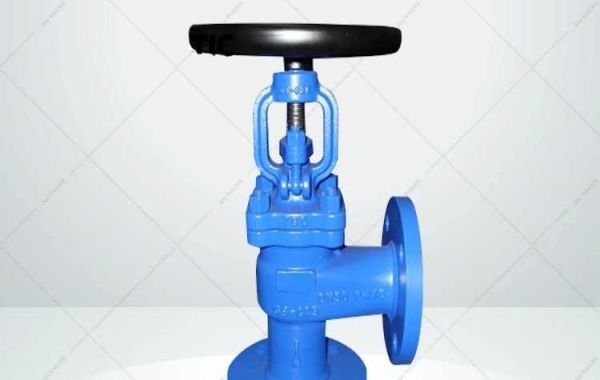When installing electric actuated valves, ensuring the proper coordination between the valve and the electric actuator is crucial. An electric actuated valve is a system that combines the valve and the actuator, and the installation and operation of the actuator depend largely on the correct installation of the valve. To ensure that the electric valve operates smoothly and accurately after commissioning, it is not only essential to install the actuator according to the guidelines but also to pay close attention to the valve's installation requirements and its compatibility with the actuator.
Installation Requirements for Electric Actuated Valves
The correct installation of electric actuated valves is key to their efficient and stable operation. Below are some important points to consider during the installation process.
1. Importance of Installation Position
The position of the electric valve directly affects its operational efficiency and ease of maintenance. Valves should ideally be installed on horizontal pipelines with the valve body kept vertical, ensuring the valve stem is perpendicular to the ground. This setup helps the actuator work in its optimal position (with the output shaft installed vertically above the valve) and reduces the risk of sealing failures or part wear caused by uneven temperature distribution during operation.
Vertical installation also facilitates easier maintenance. Electric actuated valves may experience wear and aging over time, and a vertical setup simplifies disassembly and repairs. Horizontal installation, on the other hand, can lead to uneven heating of the valve body, affecting its sealing and making repairs more challenging. Therefore, horizontal installation should be avoided where possible.
2. Alignment of Actuator and Valve Rotation
The direction of rotation of the actuator must match the rotation direction of the valve stem nut to ensure accurate valve operation. Typically, from the valve stem's perspective, a clockwise rotation closes the valve, while a counterclockwise rotation opens it. This is the standard valve rotation direction. If the valve's direction differs from the standard, it is usually easier to modify the valve than to alter the actuator's rotation, which can be difficult or even impossible in some cases.
3. Placement of Important Operating Points
For electric actuated valves that are critical, especially those involved in emergency shutdowns or frequent operations, the control device should be located where operators can easily access and monitor it. For instance, installing the actuator at the same height as the control room improves operational convenience. In such cases, a floor-mounted actuator connected to the valve via a universal joint can ensure both flexibility in operation and stability in installation.
Maintenance and Compatibility of Electric Actuated Valves
The long-term reliability of electric actuated valves depends on proper maintenance and ensuring that all components work together seamlessly. The following are key measures to keep electric actuated valves operating efficiently.
1. Lubrication of Valve Stem Nut
The reliable operation of electric actuated valves depends heavily on the lubrication of the valve stem nut. During installation, the nut should be positioned correctly, and regular lubrication should be applied to reduce friction and extend its lifespan. Good lubrication minimizes the load on the actuator, ensuring smooth operation when opening and closing the valve.
2. Special Considerations for High-Temperature Valves
Electric actuated valves operating in high-temperature environments have specific design differences from standard valves. To compensate for thermal expansion stresses, a disc spring is often added to the valve stem nut to absorb expansion. If this component is missing in the field installation, modifications should be made to include a suitable spring structure to prevent thermal expansion from impacting performance.
Additionally, to ensure the actuator works properly in high-temperature conditions, valves should be equipped with insulation to reduce heat transfer to the actuator. The height of the valve bracket should also consider the actuator's heat tolerance to ensure it operates within a safe temperature range. If extending the bracket is impractical, heat sinks can be installed on the valve bonnet and bracket, or the actuator can be installed separately using a universal joint to lower the operating temperature and extend the actuator's lifespan.
Sealing Management for Electric Actuated Valves
Proper sealing management is critical to the safety and performance of electric actuated valves. Here are key points to ensure effective sealing.
1. Proper Adjustment of Packing Tightness
The sealing performance of electric actuated valves largely depends on the tightness of the packing. To prevent medium leakage, the radial pressure on the packing should slightly exceed the working pressure inside the pipeline. Over-tightening the packing does not improve sealing and may cause it to lose elasticity, leading to leakage. Therefore, the packing tightness should be adjusted appropriately during installation and maintenance to achieve a good seal without hindering the movement of the valve stem.
2. Sealing Maintenance in Special Conditions
For valves exposed to high pressure, high temperature, or corrosive media, special attention must be paid to the sealing design. In such cases, careful selection of sealing materials, precise adjustment of packing tightness, and regular inspections are essential. Proper sealing management not only ensures safe control of the medium but also extends the valve's service life and reduces the risk of equipment failures or safety hazards caused by leaks.
Conclusion
The installation and maintenance of electric actuated valves are crucial to their long-term stable operation. By selecting the proper installation position, ensuring the correct coordination between the actuator and the valve, applying appropriate lubrication, and managing sealing effectively, the performance and reliability of electric actuated valves can be maximized. In extreme conditions such as high temperatures or high pressure, taking measures to manage thermal expansion, maintain sealing, and prolong equipment life will significantly enhance the safety and stability of the entire system. Proper installation and maintenance of electric valves not only ensure efficient operation but also optimize the performance of industrial systems, contributing to both operational safety and economic efficiency.








